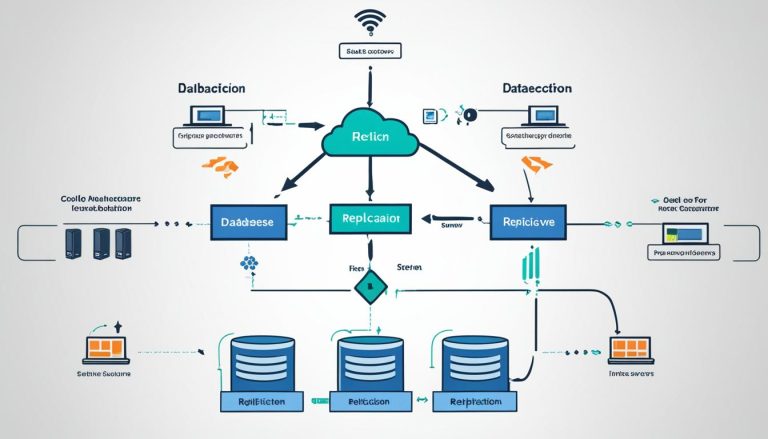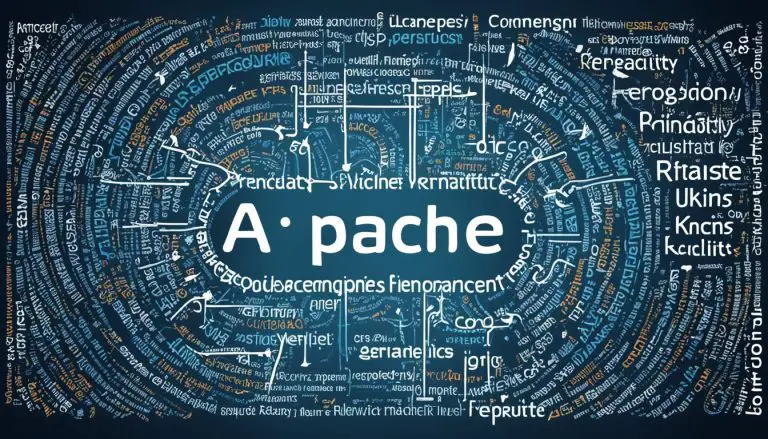What is OLAP: Your Guide to Analytical Processing
Have you ever wondered how businesses are able to analyze massive amounts of data quickly and efficiently? The answer lies in a powerful technology called Online Analytical Processing (OLAP). In this article, I will provide you with a comprehensive explanation of OLAP and its role in the world of data analysis and business intelligence.
Key Takeaways
- OLAP is a technology that allows for the analysis of large volumes of data.
- It involves multidimensional data analysis, complex calculations, and real-time data manipulation.
- OLAP is a key component of business intelligence systems.
- OLAP enables users to explore and analyze data from various perspectives.
- Implementing an OLAP system requires consideration of factors such as data quality, scalability, security, and user training.
Demystifying Data Cubes and OLAP
A Data Cube is a fundamental component of Online Analytical Processing (OLAP) that revolutionizes data exploration. By representing data in a multidimensional format, Data Cubes enable users to navigate complex data landscapes effortlessly. With the ability to manipulate dimensions and measures dynamically, OLAP empowers users to uncover valuable insights through interactive and iterative analysis.
At its core, a Data Cube consists of dimensions and measures. Dimensions categorize data into various attributes that describe the data, such as time, geography, or product. Measures, on the other hand, quantify the data and provide a numeric value for analysis, such as sales revenue or customer count. Together, dimensions and measures form the building blocks of the Data Cube, generating a comprehensive representation of the underlying data.
OLAP acts as the guide through this multidimensional realm, facilitating flexible exploration and analysis. With OLAP, users can dynamically rearrange dimensions and measures to view data from different perspectives. By pivoting the data, users can rotate the dimensions to uncover new patterns and relationships. This interactive and exploratory approach to data analysis allows users to gain valuable insights and make data-driven decisions.
“Data Cubes and OLAP empower users to explore data from multiple angles and dimensions, providing valuable insights and facilitating data-driven decision-making.”
Benefits of Data Cubes and OLAP:
- Efficient data exploration: Data Cubes allow users to navigate vast data landscapes quickly and efficiently, enabling them to uncover valuable insights in a fraction of the time.
- Multidimensional exploration: OLAP provides the tools to traverse data from multiple dimensions, facilitating a comprehensive analysis of various attributes and perspectives.
- Interactive and iterative analysis: With OLAP, users can interact with the data, iterate on analysis, and refine their insights for optimal decision-making.
By harnessing the power of Data Cubes and OLAP, organizations can unlock the full potential of their data, gaining valuable insights and making informed decisions. The next section will delve into the different methods for computing data cubes, further expanding our understanding of these powerful tools.
Methods for Data Cube Computation
Computing data cubes involves several methods that allow users to explore and analyze data from different perspectives. These methods include:
Roll-Up and Drill-Down
Roll-Up and Drill-Down are techniques that enable users to navigate across levels of data abstraction. By using Roll-Up, users can aggregate data to higher levels of summarization, gaining a broader view of the data. On the other hand, Drill-Down allows users to delve into the intricate details of the data, uncovering specific information. Together, these techniques provide a flexible way to analyze data at different levels, providing insights into both the big picture and granular details.
Slice and Dice
Slice and Dice techniques allow users to create subsets of data along specific dimensions. Users can slice the data, focusing on a specific range or portion of the data by selecting a subset along a single dimension. Dice, on the other hand, enables users to create subsets by selecting a subset along multiple dimensions. These techniques offer the ability to narrow down analysis to specific areas of interest, facilitating focused exploration and targeted analysis.
Pivoting
Pivoting is a method that allows for the rearrangement of dimensions dynamically. Users can transform the way the data is represented by swapping dimensions, providing different perspectives on the data. This flexibility offers the opportunity to explore different combinations of dimensions, enabling users to gain new insights and uncover hidden patterns in the data.
Drill-Across
Drill-Across is a technique that allows users to explore data from different sources concurrently. It involves navigating across multiple data cubes or databases to analyze related information. By drilling across, users can gain a comprehensive understanding of data relationships, facilitating cross-functional analysis and enabling the extraction of valuable insights from disparate data sources.
Aggregation
Aggregation summarizes data at various levels, unveiling patterns and trends. It involves calculating metrics such as sums, averages, or counts to provide a higher-level view of the data. Aggregation enables users to analyze data in a more concise and meaningful way, allowing for easier identification of trends, patterns, and outliers.
Incorporating these methods into data cube computation enables users to manipulate and explore data in a multidimensional space, unveiling valuable insights and supporting informed decision-making.
| Method | Description |
|---|---|
| Roll-Up and Drill-Down | Ascend to higher abstraction or descend to intricate details |
| Slice and Dice | Create subsets along dimensions for focused exploration |
| Pivoting | Rearrange dimensions dynamically for different perspectives |
| Drill-Across | Explore data from different sources concurrently |
| Aggregation | Summarize data at various levels to unveil patterns and trends |
Exploration and Discovery in Multidimensional Databases
When it comes to analyzing and gaining insights from data cubes, OLAP tools provide users with an interactive and dynamic experience. With features like Interactive Analysis, Visualizations, and Attribute-oriented Analysis, users can delve deep into their data and uncover valuable information.
Interactive Analysis allows users to explore data cubes in a flexible and intuitive manner. Through a user-friendly interface, they can navigate through different dimensions, filter data, drill-down to more detailed levels, and pivot dimensions to gain new perspectives. This dynamic exploration enables users to discover hidden patterns and trends, as well as identify outliers and anomalies.
Visualizations play a crucial role in data analysis, as they facilitate the understanding of complex information and make it easier to identify patterns and trends at a glance. By representing data visually through charts, graphs, and other visual elements, users can quickly grasp the relationships and correlations between different dimensions and measures. Visualizations not only enhance data exploration but also facilitate effective communication of insights to stakeholders.
Attribute-oriented Analysis focuses on scrutinizing specific attributes or characteristics within the data cube. By selecting and analyzing specific attributes, users can gain a deeper understanding of the factors influencing the data. This approach helps uncover relationships and dependencies between attributes and enables users to make more informed decisions based on their findings.
Overall, these interactive and visual analysis techniques empower users to navigate multidimensional databases with ease and efficiency. They provide a comprehensive view of the data, support data-driven decision-making, and enable users to discover valuable insights that can drive business success.
| Benefits of Interactive Analysis | Benefits of Visualizations | Benefits of Attribute-oriented Analysis |
|---|---|---|
|
|
|
Navigating the Data Science Methodology Landscape
When it comes to data science, having a structured methodology is crucial for success. Two popular frameworks that guide data analysis are the CRISP-DM Methodology and the OSEMN Framework.
CRISP-DM Methodology
The CRISP-DM (Cross-Industry Standard Process for Data Mining) methodology provides a comprehensive and systematic approach to data analysis. It consists of six key phases:
- Business Understanding: Gain a clear understanding of the business objectives and requirements.
- Data Understanding: Explore and analyze the available data to identify data quality issues and gain insights.
- Data Preparation: Clean, transform, and format the data to make it suitable for analysis.
- Modeling: Select and build the appropriate models to extract insights and make predictions.
- Evaluation: Assess the effectiveness and accuracy of the models in meeting the business objectives.
- Deployment: Implement the models and integrate them into the business processes for practical use.
OSEMN Framework
The OSEMN framework (Obtain, Scrub, Explore, Model, Interpret) provides a simplified path to data science.
- Obtain: Collect the necessary data from various sources, ensuring its integrity and relevance.
- Scrub: Clean and preprocess the data to remove inconsistencies, errors, and missing values.
- Explore: Perform exploratory data analysis to understand the relationships and patterns within the dataset.
- Model: Develop and implement models to extract insights and make predictions based on the data.
- Interpret: Interpret the results, communicate findings, and make data-driven recommendations.
By following these methodologies and frameworks, data scientists can effectively navigate the complex landscape of data analysis, ensuring that their approach is systematic, efficient, and aligned with the business objectives.
| CRISP-DM Methodology | OSEMN Framework |
|---|---|
| 1. Business Understanding | 1. Obtain |
| 2. Data Understanding | 2. Scrub |
| 3. Data Preparation | 3. Explore |
| 4. Modeling | 4. Model |
| 5. Evaluation | 5. Interpret |
| 6. Deployment |
Types of OLAP Systems
OLAP systems are categorized into three main types: Multidimensional OLAP (MOLAP), Relational OLAP (ROLAP), and Hybrid OLAP (HOLAP). Each type offers unique features and advantages, catering to different analytical needs and data storage architectures.
Multidimensional OLAP (MOLAP): MOLAP systems directly index data into a multidimensional database, enabling fast and efficient data retrieval. This type of OLAP system organizes data into a pre-aggregated and optimized structure, allowing for high-performance analytics. MOLAP is ideal for scenarios where real-time data analysis and rapid response times are critical.
Relational OLAP (ROLAP): ROLAP systems perform dynamic multidimensional analysis on data stored in a relational database. In ROLAP, the data remains in its original relational format, eliminating the need for data duplication. This allows for scalability and flexibility in handling large volumes of data. ROLAP is suitable for environments where data is constantly changing, and frequent updates are required.
Hybrid OLAP (HOLAP): HOLAP systems combine the strengths of MOLAP and ROLAP. By leveraging the benefits of both types, HOLAP offers a balanced approach to OLAP analysis. It stores pre-aggregated data in a multidimensional database for quick retrieval, while also allowing for on-demand access to detailed data stored in a relational database. HOLAP is a versatile solution that provides both high performance and flexibility.

By understanding the different OLAP system types, organizations can choose the most suitable option based on their specific analytical requirements and data architecture. MOLAP offers excellent performance for real-time analysis, ROLAP provides scalability for dynamic data, and HOLAP combines the best of both worlds.
The Benefits of OLAP in Business Intelligence
OLAP plays a critical role in business intelligence, providing organizations with several benefits. Let’s explore how OLAP can contribute to faster decision-making, improved data visibility, enhanced collaboration, streamlined reporting, and increased efficiency.
Faster Decision-Making
By leveraging OLAP technology, organizations can access real-time insights that enable faster decision-making. OLAP allows for the analysis of large volumes of data, providing valuable information that can drive strategic actions and help businesses stay ahead of the competition.
Improved Data Visibility
OLAP provides a comprehensive view of an organization’s performance by allowing users to analyze data from multiple perspectives. With improved data visibility, businesses can identify patterns, trends, and anomalies, enabling them to make data-driven decisions and optimize their operations.
Enhanced Collaboration
OLAP facilitates enhanced collaboration among team members by providing a centralized and user-friendly platform for data analysis. By sharing insights and collaborating on OLAP dashboards, teams can work together more effectively, align their efforts, and drive better business outcomes.
Streamlined Reporting
With OLAP, organizations can generate custom reports and visualizations tailored to their specific needs. This streamlined reporting process allows for quick and efficient access to key metrics, ensuring stakeholders have the information they need to make informed decisions and monitor performance.
Increased Efficiency
OLAP automates calculations and data manipulation tasks, saving time and increasing overall efficiency. With OLAP’s interactive and iterative analysis capabilities, users can quickly navigate through data cubes, explore different dimensions, and uncover insights without the need for complex manual processes.
Overall, OLAP empowers organizations to make faster decisions, gain comprehensive data visibility, foster collaboration, streamline reporting, and improve efficiency. By harnessing the power of OLAP in their business intelligence efforts, companies can unlock the full potential of their data and drive success in today’s competitive landscape.
| Benefit | Description |
|---|---|
| Faster Decision-Making | Real-time insights enable quick and informed decisions. |
| Improved Data Visibility | A comprehensive view of performance from multiple perspectives. |
| Enhanced Collaboration | Centralized platform for sharing insights and collaborating. |
| Streamlined Reporting | Custom reports and visualizations tailored to specific needs. |
| Increased Efficiency | Automated calculations and streamlined data manipulation. |
Conclusion
In conclusion, Data Exploration is essential for organizations looking to unlock valuable insights from their vast data repositories. The implementation of an Online Analytical Processing (OLAP) system is a crucial step in this process. However, it is important to carefully consider several factors before embarking on an OLAP implementation journey.
Data quality should be a focal point, ensuring that the data being analyzed is accurate, complete, and consistent. Scalability is another consideration, as organizations should choose an OLAP system that can handle the increasing volume of data generated. Security measures must be put in place to protect sensitive data and prevent unauthorized access.
Additionally, proper user training is essential to maximize the benefits of OLAP. Individuals need to understand how to navigate the system, utilize its features, and interpret the insights it provides. This knowledge empowers businesses to make data-driven decisions and stay ahead in today’s competitive landscape.
By carefully considering these OLAP implementation considerations – data quality, scalability, security, and user training – organizations can unleash the power of Data Exploration and transform their data analysis capabilities. With OLAP, businesses can gain a competitive edge, uncover hidden patterns and trends, and make informed decisions that drive growth and success.
FAQ
What is OLAP?
OLAP stands for Online Analytical Processing. It is a technology that allows users to analyze large volumes of data quickly and efficiently. OLAP involves multidimensional data analysis, complex calculations, and real-time data manipulation. It is a key component of business intelligence systems and provides users with the ability to explore and analyze data from various perspectives.
What are Data Cubes and how are they related to OLAP?
Data Cubes are multidimensional representations of data that allow for efficient data exploration. They consist of dimensions and measures, which enable users to traverse data landscapes and uncover insights. OLAP acts as the guide through this multidimensional realm, allowing for dynamic rearrangement of dimensions and measures, pivotable data perspectives, and interactive and iterative analysis.
What are the methods for computing data cubes in OLAP?
OLAP provides several methods for computing data cubes. Roll-Up and Drill-Down allow users to ascend to higher abstraction or descend to intricate details. Slice and Dice enable the creation of subsets along dimensions for focused exploration. Pivoting allows for the rearrangement of dimensions dynamically. Drill-Across allows users to explore data from different sources concurrently. Aggregation summarizes data at various levels, unveiling patterns and trends.
How can OLAP empower users to navigate and analyze data cubes?
OLAP tools empower users with the ability to interactively navigate and analyze data cubes. Interactive Analysis allows for exploration of data. Visualizations breathe life into data, enabling patterns and trends to surface. Attribute-oriented Analysis involves scrutinizing data based on specific attributes or characteristics, revealing relationships between attributes and gaining a deeper understanding of data factors.
What are the methodologies for data analysis associated with OLAP?
The CRISP-DM (Cross-Industry Standard Process for Data Mining) methodology provides a structured approach to data analysis. It involves phases such as business understanding, data understanding, data preparation, modeling, evaluation, and deployment. The OSEMN framework (Obtain, Scrub, Explore, Model, Interpret) offers a simplified path to data science, encompassing data collection, cleaning, exploratory analysis, modeling, and interpretation.
What are the types of OLAP systems?
OLAP systems can be classified into three types: Multidimensional OLAP (MOLAP), which directly indexes into a multidimensional database; Relational OLAP (ROLAP), which performs dynamic multidimensional analysis on data stored in a relational database; and Hybrid OLAP (HOLAP), which combines the strengths of MOLAP and ROLAP. MOLAP systems offer high performance, ROLAP systems provide scalability and flexibility, and HOLAP systems offer a balance between the two.
What are the benefits of incorporating OLAP into business intelligence?
OLAP plays a critical role in business intelligence, providing organizations with several benefits. It enables faster decision-making by providing real-time insights. Improved data visibility allows for a comprehensive view of an organization’s performance. Enhanced collaboration facilitates the sharing of insights among team members. Streamlined reporting enables the generation of custom reports and visualizations. Increased efficiency is achieved through automated calculations and data manipulation tasks.
What should organizations consider when implementing an OLAP system?
When implementing an OLAP system, organizations should consider factors such as data quality, scalability, security, and user training. It is important to ensure that the data being analyzed is accurate and reliable. Scalability is crucial to accommodate growing data volumes. Security measures must be in place to protect sensitive information. Providing comprehensive user training ensures that users can maximize the benefits of OLAP and effectively analyze data.
- About the Author
- Latest Posts
Mark is a senior content editor at Text-Center.com and has more than 20 years of experience with linux and windows operating systems. He also writes for Biteno.com






